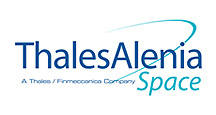

Thales Alenia Space, a joint venture between Thales (67%) and Leonardo (33%), has signed two contracts with Korea, one with Aerospace Industries, LTD. (KAI) and one with Hanwha Systems Corporation (HSC), to develop a constellation of high-resolution observation radar satellites for the Agency for Defence Development (ADD), known as Korea “425 Project”, to serve South Korea.

Korean Aerospace Industries leads a consortium including South Korea’s Hanwha System and Thales Alenia Space. All three companies have been involved in developing satellites and related technologies for a number of years. Technical cooperation and several know-hows required for the SAR (Synthetic Aperture Radar) Satellites development will be transferred to Korean companies, up to a maximum involvement in the production of the last satellite of the Constellation, providing them with an outstanding growth in the field of design and development of Earth Observation Systems.
For the four satellites, Thales Alenia Space will provide the SAR Payloads and the platform elements (especially for Control Momentum Gyro and sensors) derived from the HE-R1000 product (High Efficiency Radar), part of the Thales Alenia Space Observation product family that includes radar and optical satellites. This technology will enable short revisit times for each of the satellites, and support all-weather operation, with a very high global revisit frequency.
The constellation will be used by the Korean authorities for surveillance, intelligence and control of specific areas of interest thanks to the acquisition of high resolution images. Agility is one of the primary assets for advanced missions entrusted to this new generation of high-resolution surveillance satellites. Based on an active feed array and reflector antenna innovative solution, the satellites ensure superior quality images, while unique agility capability is provided thanks to the adaptation of a control momentum gyro: a spinning rotor and one motorized gimbal tilt the rotor’s angular momentum. As the rotor tilts, the changing angular momentum causes a gyroscopic torque that rotates the spacecraft. Moving around the three axes, these “dancing satellites” will be fitted with a special antenna developed within the scope of the Thales Alenia Space Research & Development program. With a diameter of 5 meters, this new generation antenna will open its 24 petals once in space.
Executive Comments
Donato Amoroso, SVP, Observation, Exploration and Navigation at Thales Alenia Space, said that the company is honored to have earned the confidence of the Korean Ministry of Defence and other authorities involved in this project, who recognized our proven track record in delivering state-of-the-art observation satellites. This contract is a superb opportunity for cooperation between Italy and Korea and confirms the new global trend in the space business and the ‘new space’ transformation strategy being implemented by Thales Alenia Space, with the ultimate aim of becoming a major manufacturer of small satellite constellations featuring short revisit times. This business win confirms Thales Alenia Space’s long-standing expertise and unique global position in the design, development and construction of radar Earth observation satellites, as well as the development of satellite constellations. It is also based on the heritage of the excellent performance of the COSMO-SkyMed program, the world’s most advanced spaceborne radar system.

